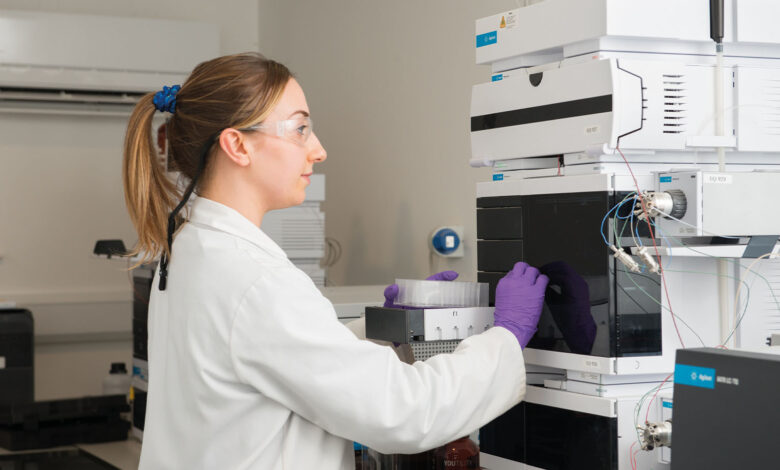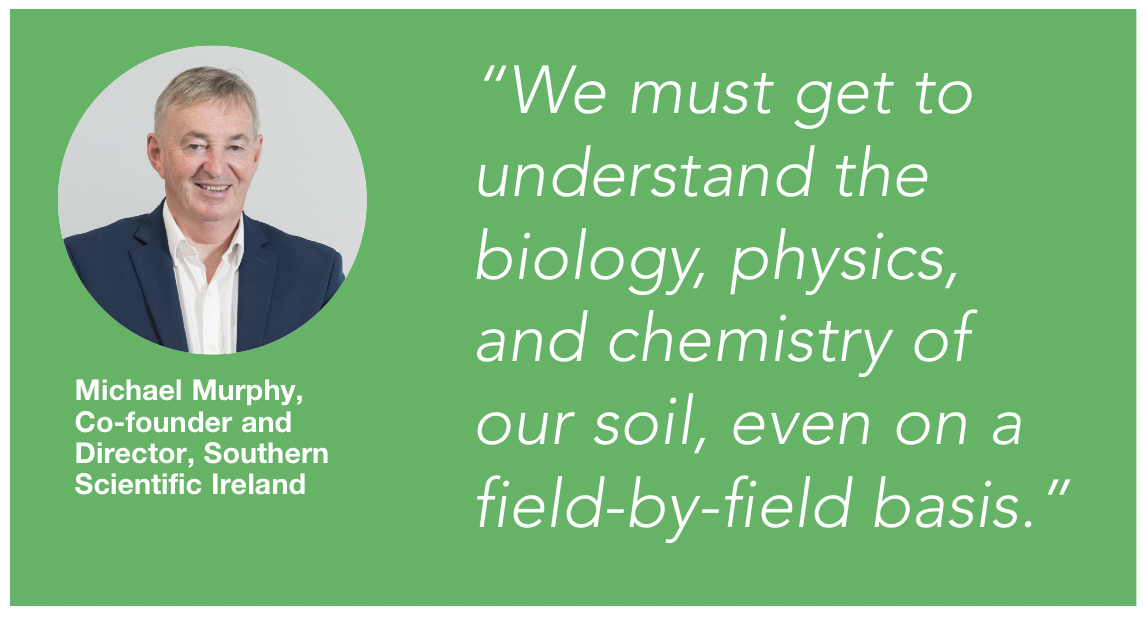Can Ireland balance agricultural growth and the environment?

Amid the challenge of diminished water quality and the debate around the responsibility of farmers to help in its correction, Michael Murphy, Co-founder and Director of Southern Scientific Ireland asks: Does a solution to this problem lie in soil science?
A debate continues between agriculture and environment and their respective representatives on the quality of our waterways, rivers, lakes, estuarine and marine water. This debate gets hotter each time an Environmental Protection Agency (EPA) report is published on the status of Irish water.
At a conference in Galway in June 2024, the EPA presented data which essentially showed that, in the last 20 years, there was very little overall improvement in the quality of water since the introduction of the Water Framework Directive catchments monitoring.
By inference, the quality of water prior to that time was less than satisfactory. Whatever about the commentary that accompanies these yearly reports, the actual data that is collected by the scientists does not lie. The EPA has a statutory duty to do this work and to report it as it sees fit in order to achieve the objectives that have been set out in national policy and EU directives.
On the agriculture side, it goes without saying that the industry is vital and essential to the Irish economy and particularly to the rural economy. Worth over €17 billion per annum. It is the only industry that has a practitioner or practitioners in every single townland in the country. It is a part of the economic and social fabric of rural society and gives purpose and belonging to a large proportion of our population.
However, if a farmer buys a bag of 18-6-12 fertiliser this week and finds that, after spreading it on land, a proportion of it is flowing down the local river, that is not a good outcome for anyone.
The debate centres around this point and the arguments are more often about the proportion that is absorbed by the crop versus the proportion entering the waterway. This argument is irrelevant because these proportions vary with every single field in the country and in any case the discussion should always have been about correcting this loss of nutrients. There are justifiable reasons for nutrient loss; rainfall and weather unpredictability, climate change, storage capacity, and the need to spread slurry almost throughout the entire year, as well as pressure from the demand for grass production for large milking herds and other crops.
The farming organisations cite the world’s demand for food as a pressure to produce more, but this is not a good argument because the world is full of farmers, and many countries can produce cattle, grain, and milk cheaper than we can. Farm representatives argue that sewage from towns, villages, industry, and septic tanks also contributes to the problem. However, this point is irrelevant, as farmers are often directly or indirectly connected to these sources. Meanwhile, Uisce Éireann, industry, and local authorities are already working on and investing in corrective actions to reduce nutrient loss.

So it is best to leave the EPA reports in the background and take care of nutrient loss from land. This is exactly what farmers, farmer representative organisations, co-ops, the food industry, Teagasc, local authorities, and the Department of Agriculture, Food and the Marine (DAFM) are all working on with increasing intensity.
Some of these measures include Teagasc’s Better Farming for Water campaign, the Agricultural Sustainability, Support and Advisory Programme (ASSAP), the Local Authority Water Programme (LAWPRO), the Danú Farming Group’s Curaíocht an Phobail European Innovation Programme (EIP) project, DAFM’s National Soil Sampling and Analysis Programme and grant for slurry storage, all of which should lead to a steady improvement in water quality over time.
One important DAFM programme is a €10 million to €20 million investment in a very comprehensive programme of soil sampling and analysis to involve over 10,000 farms. The soil analysis includes basic nutrients, NPK (nitrogen, phosphorus, and potassium), lime, major and minor trace elements, total carbon and nitrogen, and cation exchange capacity (CEC).
This large suite of tests gives a much better understanding of soil than we ever had in the past. The objective is that the results would be used in the assessment of the chemistry of soils and thereby determine the capacity of soils to assimilate and hold nutrients, including carbon, so that the nutrient and trace element inputs match plant uptake requirements in terms of quantity and uptake rate. The programme runs from 2023 to 2025 and will involve some 15,000 farmers.
Understanding soil biology, physics, and chemistry, even on a field-by-field basis, is crucial. Soil is a living entity with a structure that must be maintained. Major and minor elements reveal the soil’s chemical interactions; for instance, nitrogen, phosphorus, and potassium applications alone will not ensure crop health if trace elements like zinc, copper, molybdenum, iron, or manganese are deficient. Without the right trace elements, excess NPK nutrients may leach into groundwater or runoff into surface water. Soil pH also plays a key role. Cation exchange capacity (CEC) is vital in determining soil’s ability to hold nutrients. Clay soils, with high CEC, retain nutrients well, whereas sandy soils, with low CEC, struggle to do so.
The EPA’s water quality reports serve as the true benchmark of our progress—and, regrettably, often highlight our shortcomings. While debates around these reports are important, they should not overshadow the need for actionable solutions. Reducing nutrient loss through the soil-water continuum requires optimising the inputs to the soil, which demands a comprehensive understanding of each field’s physical and biological characteristics, its basic and trace nutrient needs, and the soil’s nutrient-holding capacity (CEC).

T: 087 261 8276
E: michael@southernscientificireland.com
W: www.southernscientificireland.com





